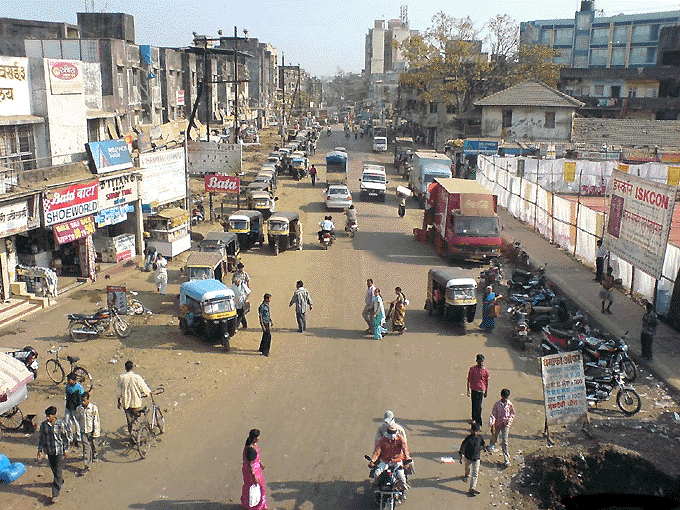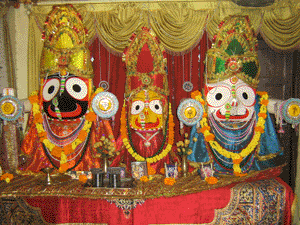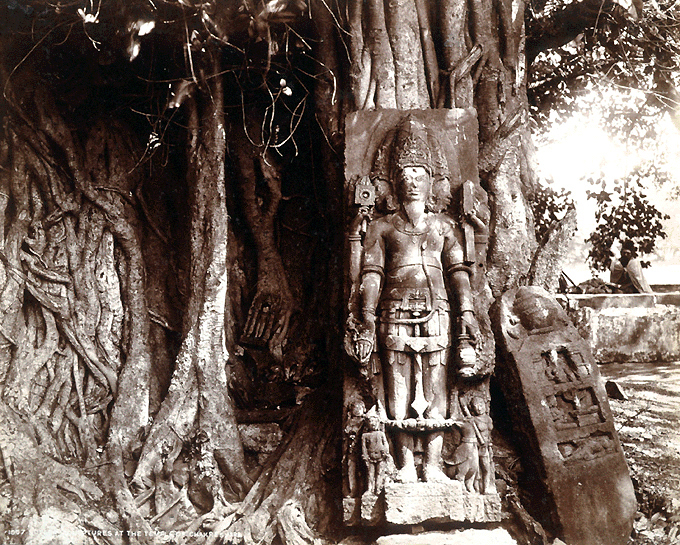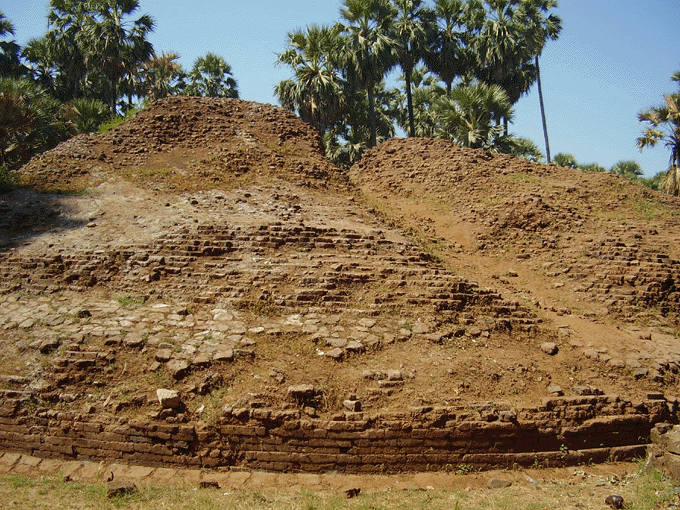
|
|
|
|
The moulded walls of the basement had been built most of the way round the mandapa or hall. We excavated and opened out the walls as far as the funds at our disposal would permit. The temple had only been commenced and had been abandoned for some reason, at least this is what the general appearance leads me to think. The length of the main building, judging from the extent of the plan disclosed, would have been about 120 feet exclusive of the platform on which it stood or the Nandi pavilion which possibly stood on the smaller mound on the west side of the site. From the sculptures lying about, and a fragment of a huge linga, I believe the temple to have been intended for a Saiva shrine. But it was never finished, the foundation of the shrine not having been laid, the unfinished walls stopping short just where the shrine would have joined the hall. The sculptures lying about around the mound, in an adjacent garden, at the temple on the west bank of the Ramakunda, on the east bank of the great Gastalov, and on the west bank of the Nirmal tank, I believe were all intended for this same temple. The great figure of Brahmadeva at the temple on the west bank of the Ramakunda is an unfinished work, it being left in the rough, so is one of the figures on the bank of the Nirmal tank which is merely blocked out and is lying where the masons left it. The reason for them being so scattered will be explained further on. [ ] I have already spoken of sculptures, one of them unfinished, lying on the west bank of the Nirmal tank, and there are images and other carved ceiling and capital blocks lying on the east bank of Gas tank. These seem to be just lying where the sculptors had been working at them, for at the second place the ground around is full to some depth of stone chips. The blocks were possibly brought by sea from some place along the coast where good stone in suitable lengths for the purpose was obtainable, and were landed at various points along the banks of the creek where the workmen were engaged in hundreds preparing the material for the new temple at Sopara." A great of additional information is provided about the Sopara ruins in the Archeology Progress Report of 1898, including Buddhist finds from the stupa located near the Brahma murti, and detailed indications of Sopara's identity as the Biblical Ophir. Another rich source of historical data on the Lord Brahma murti at Sopara is found in a report entitled Inscriptions of the Silaharas, Vol. VI, published by the Archeological Survey of India in 1977. In a passage describing the ruins at Sopara we read the following, which includes a fascinating description of the Lord Brahmadeva murti: "There are different kinds of images. Some are meant for decoration. They are fixed on the walls of temples. Others are meant for worship. They are more artistically carved. As the temples at Ambarnath and Khidrapur are of the Siva cult, the object of worship in them is the Siva-linga. But there were other images carved in the round meant for installation in sacred shrines. From them one can form an estimate of the sculptural skill of the age. We shall take a few of them here for description. Brahma Temples of Brahma were rarely erected. There is only a single reference to such a temple in the inscriptions of the Sillaharas edited here, viz , that in the Kolhapur plates of Gandaraditya dated Saka 1048, images of Brahma were affixed to the walls of temples dedicated to Siva and Vishnu. There is one such image of Brahma of the ahngana-murti type affixed to a wall of the Ambarnath temple. It has been described before. As there are very few temples of Brahma, his images intended for worship are extremely rare. One such was found at the temple on the west bank of the Ramakunda at Sopara (ancient Surparaka) in the Thana District. It is a standing sammukha image of the god, wearing a jata-mukuta. Of his three faces which are seen, the middle one only has a beard. The god holds the akshamala and the smch in the lower and upper right hands, and the kamandalu and the pothi (unbound book) in the lower and upper left hands. [Note: the "smch" (sic) refers to the sruva, or sacrificial implement.] He wears a yajnopavita and an udaralandha, besides other ornaments and a long garland reaching below his knees. The tassels of his girdle are shown hanging down in front. On either side of the god appears a female figure carrying a bundle of kusa grass. There is, besides, his vehicle, the swan, on his left, and an attendant on his right. The image seems to have been left unfinished, but it is a good handiwork of the age." Elsewhere in Inscriptions of the Silaharas we find this prayer:
by the recitation of the Vedas and immovable worlds, secure your well-being completely."

Nallasoppara Town While researching this segment, we were pleased to discover that Lord Jagannath also now resides in Nallasopara, thanks to the mercy of Srila Prabhupada and his followers. ISKCON has opened a small temple, with around 100 devotees serving Lord Jagannath. Please visit the website of the ISKCON Nallasopara Namhatta Preaching Centre: IskconNNPC.com.

Jai Jagannatha!
| |

